In the diverse landscape of Arizona, renowned for its unique attractions, the presence of spiders adds an intriguing dimension to the state’s natural wonders. From the striking badlands to the iconic Grand Canyon, Arizona offers a captivating backdrop for outdoor enthusiasts. Amidst the diverse fauna, including roadrunners and rattlesnakes, encountering spiders in Arizona becomes inevitable. As you explore the region, it’s crucial to understand the local arachnid population, ranging from harmless species to venomous black widows, ensuring a safe and informed experience amidst the fascinating biodiversity.
Table of Contents
How to identify the spiders in Arizona?
Identifying spiders in Arizona is more straightforward than many people might think, focusing on key characteristics such as leg structure, body color, and shapes. Spiders generally have two main parts – the abdomen and the cephalothorax (the fusion of the thorax and head). In Arizona, several common spider species stand out.
Arizona Brown Spider
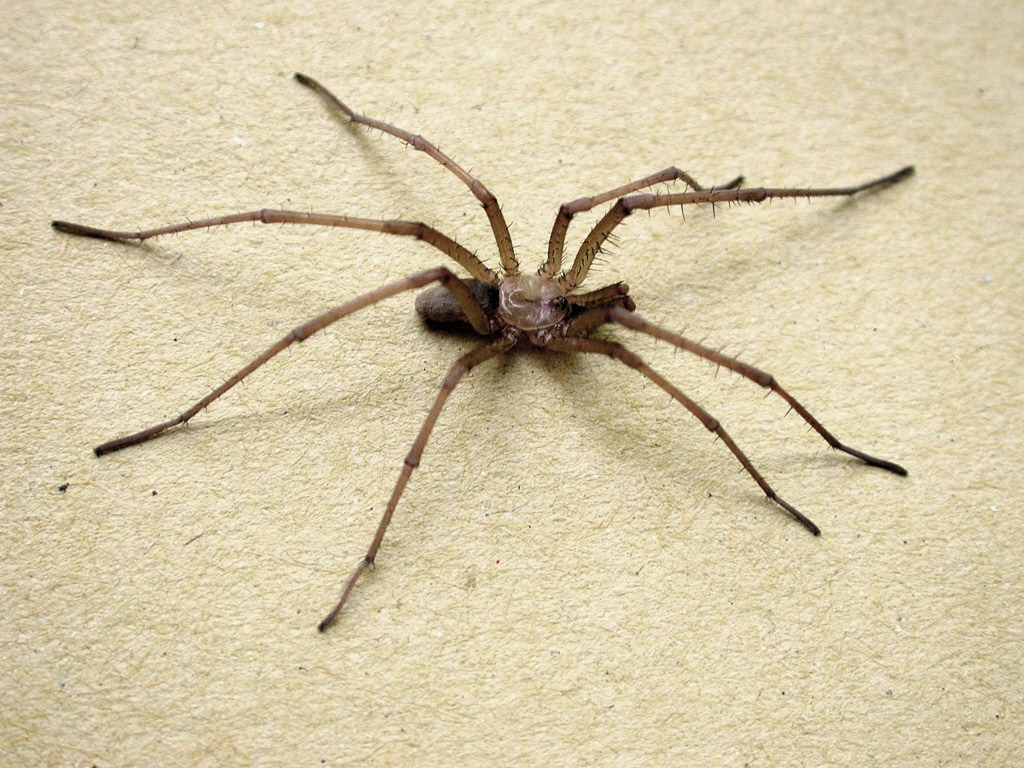
The Arizona Brown Spider, a member of the brown recluse family, is prevalent throughout the state. Recognizable by their light brown, tan, or yellowish coloring and distinctive violin-shaped markings, these spiders, especially females growing up to 13 millimeters, pose a risk with their venomous bites. Found in outdoor areas, grasslands, and forests, they are nocturnal hunters, making awareness crucial to avoid potential organ failure and difficulty breathing from their bites.
Brown Recluse Spider
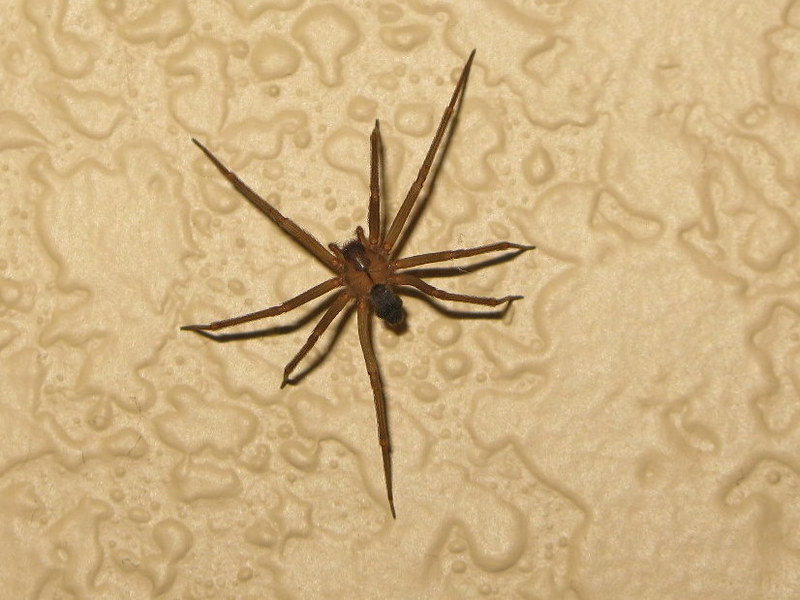
The Brown Recluse Spider, with its light brown body and violin-shaped marking, is another potentially dangerous species in Arizona, known for causing excruciating muscle pain, nausea, and vomiting. Native to the state’s desert regions, these spiders reach up to 20 millimeters in size.
Western Black Widow
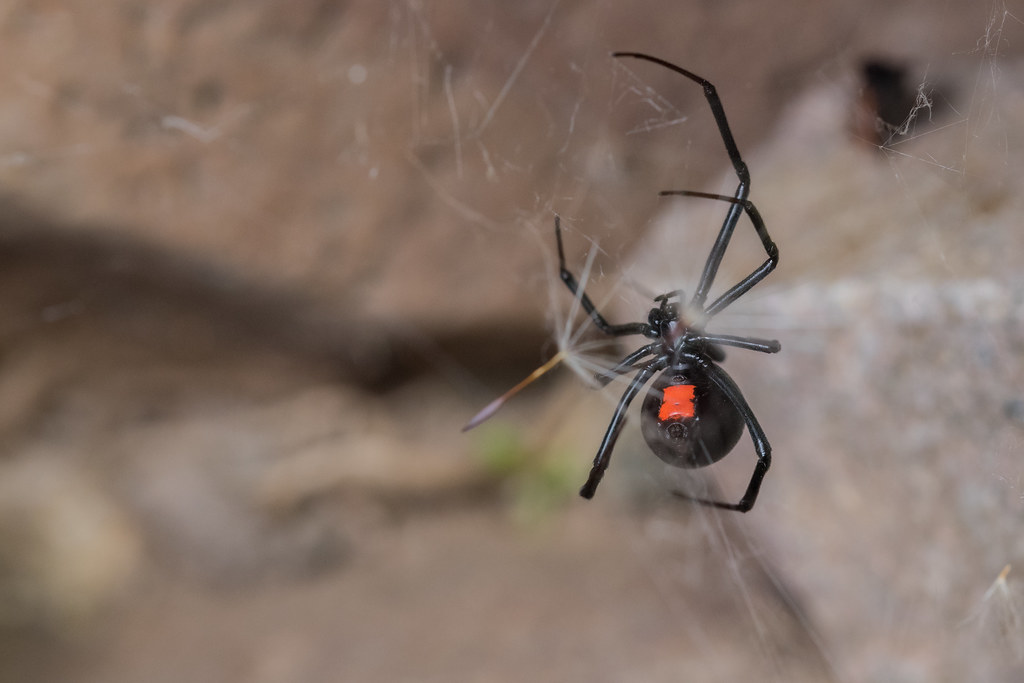
The Western Black Widow, distributed across North America and various Arizona habitats, is recognized by its hourglass-shaped marking. With females growing up to 16 millimeters, their potent neurotoxic venom can lead to difficulty breathing, muscle issues, and, in severe cases, fatalities.
Beach Wolf Spider
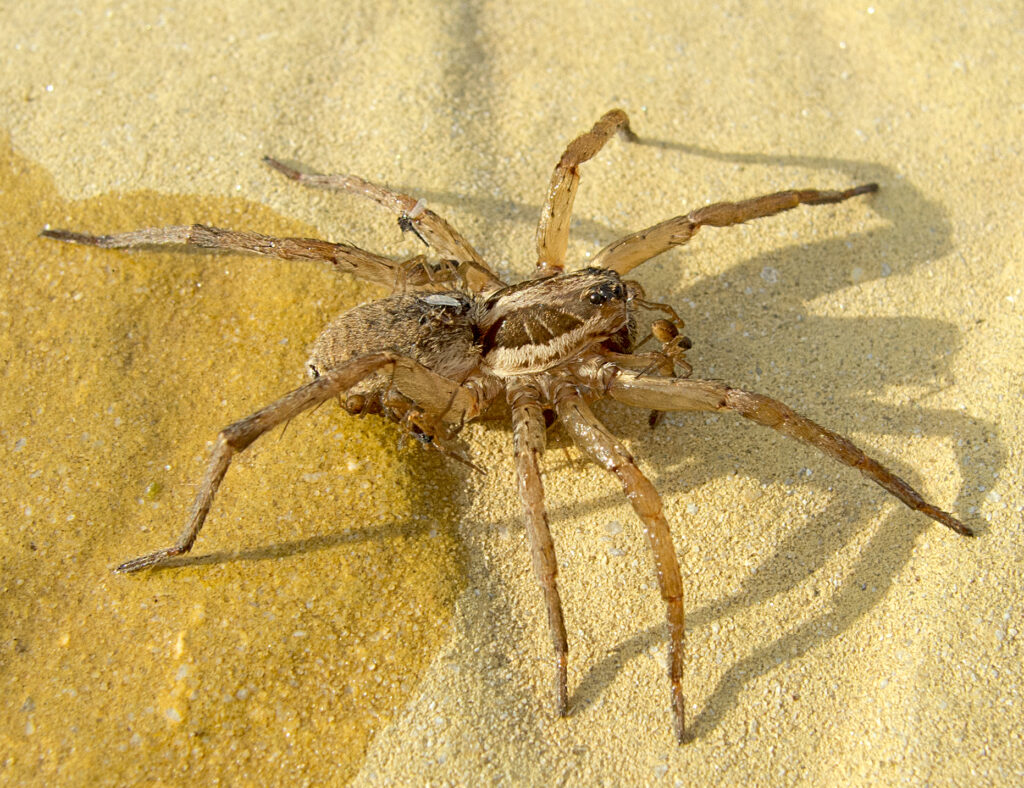
The Beach Wolf Spider, common in Arizona’s deserts and beaches, is a nocturnal creature that hides in the sand during the day. Growing up to 15 millimeters, they vary in color, with tan, brown, white, and grey hues. Their painful bites carry a high bacteria count, causing severe side effects.
Western Spotted Orb Weaver
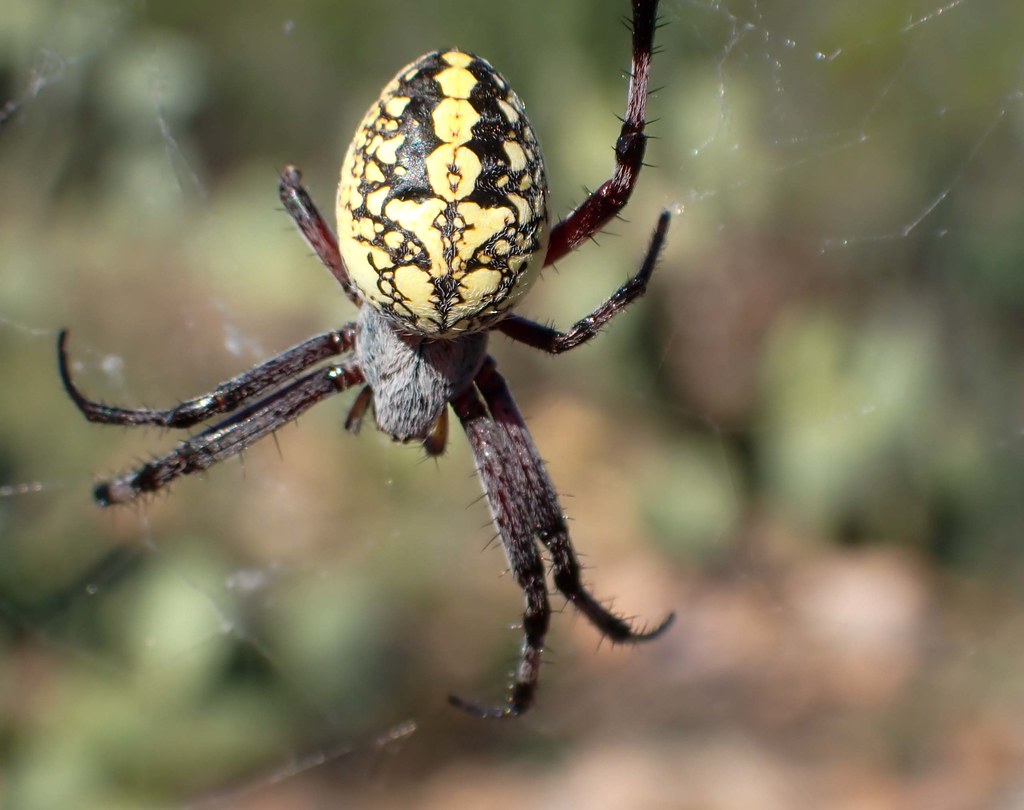
The Western Spotted Orb Weaver, thriving in different parts of Arizona, features a yellow and brown spotted pattern on its abdomen. Creating large webs to catch prey, they pose little threat to humans but can carry bacteria, necessitating caution. With a length of 18 millimeters for females and 13 millimeters for males, these spiders are prevalent in South and North America and the western states.
Golden Huntsman Spider
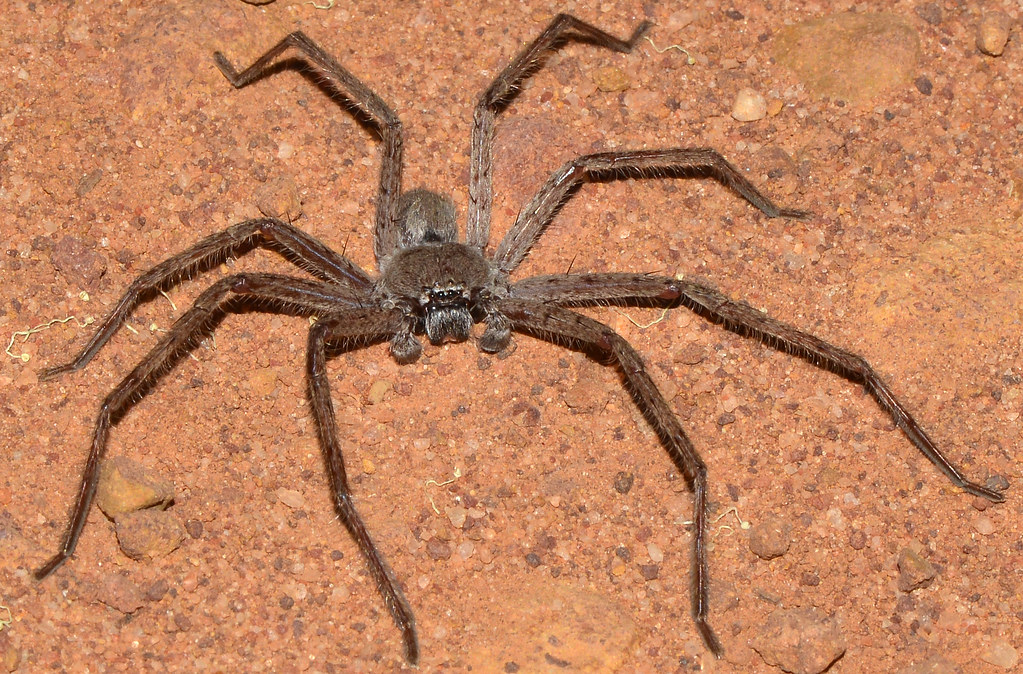
The golden huntsman spider, also known as the giant crab spider, thrives in various parts of Arizona, particularly outdoor settings. Recognizable by its golden color and larger size—females reaching up to 50 millimeters and males up to 30 millimeters—it has short brown and sandy hairs with darker brown legs. Active hunters, these spiders do not use webs, opting instead to hide and ambush their prey.
Arizona Black Hole Spider
The Arizona black hole spider, a crevice weaver spider, is found in Arizona and neighboring states like California, New Mexico, and Nevada. With females growing up to 13 millimeters, these spiders, known for their velvety body texture, create exceptional webs in crevices to catch prey. While not extremely dangerous, their bites can cause discomfort due to the high bacteria count.
Hirsute Paradise Spider
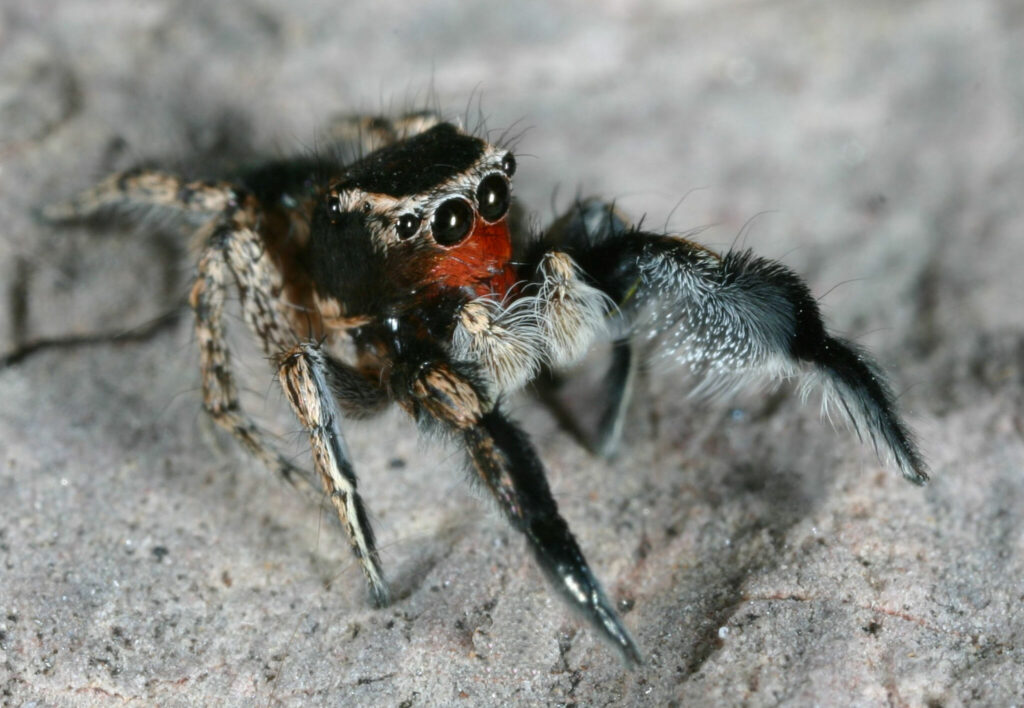
The hirsute paradise spider, a jumping spider class species, is prevalent in various parts of Arizona and neighboring states. Coming in colors like dark brown and black with unique leg colors ranging from blue to pink, red, and orange, these spiders are venomous. Operating without webs, they hide and ambush prey, with their bites causing severe swelling and muscle and joint pain.
Western Desert Tarantula
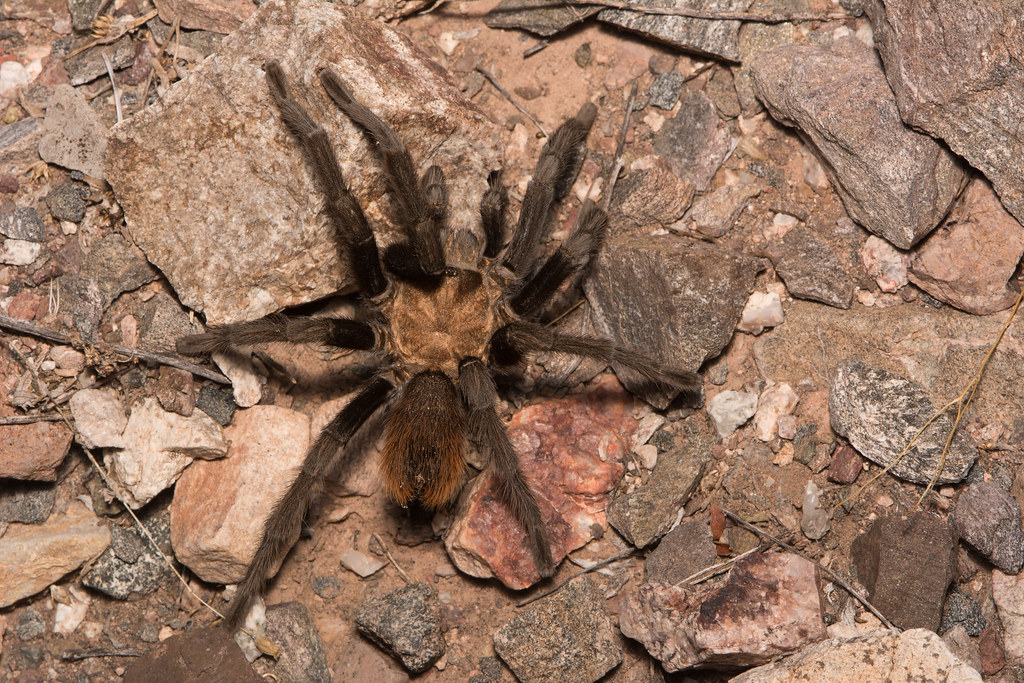
The western desert tarantula, thriving in Arizona’s desert, grows up to 13 centimeters, with females having a longer lifespan of up to 30 years compared to males’ 10 years. Found in tan, grey, and dark grey colors, they are venomous, carrying a high bacteria count that can lead to severe infections.
Western Parson Spider
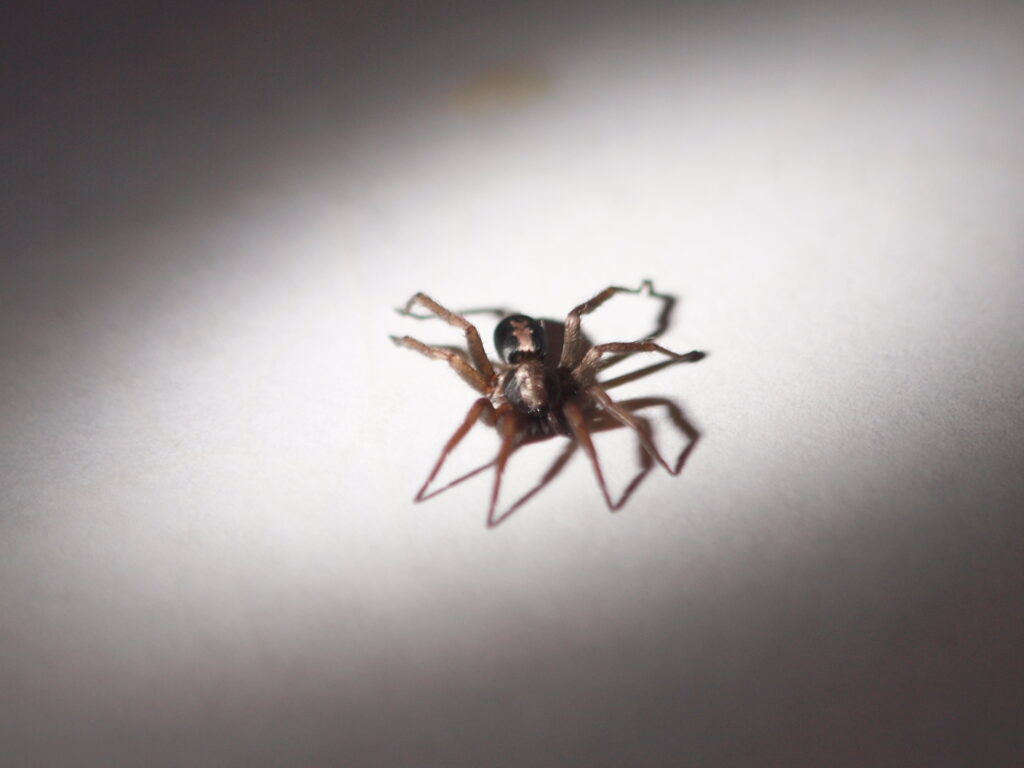
The western parson spider, common in various parts of Arizona and the western United States, has females growing up to 20 millimeters. With colors ranging from dark grey to black and dark tan, these spiders do not use webs but ambush prey, delivering a somewhat painful venom.
Grand Canyon Black Tarantula
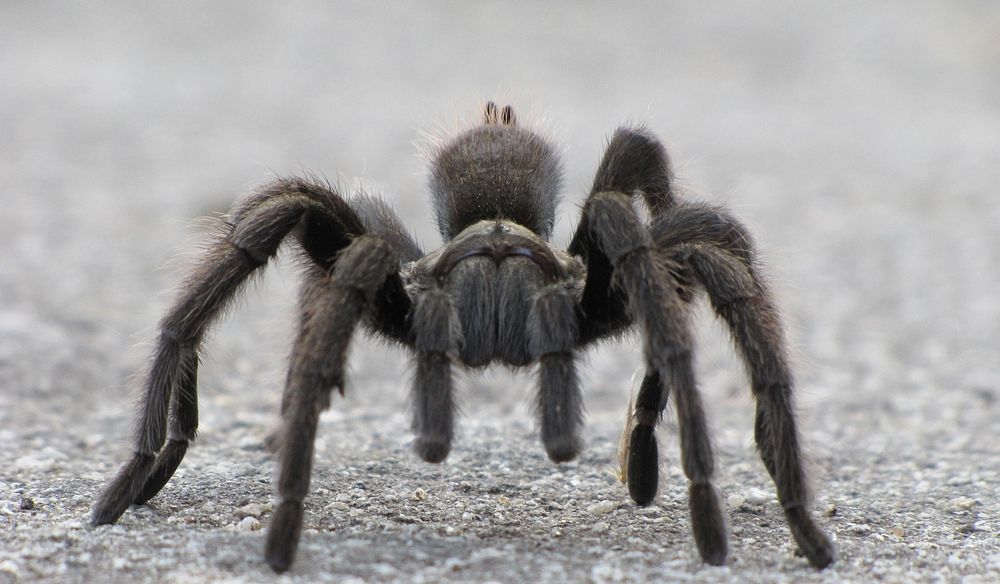
The Grand Canyon black tarantula, found around Arizona, particularly in the Grand Canyon, reaches four inches in length. While females are smaller, these spiders, with dark brown and black colors and hairs on their abdomen, are active hunters at night, leaving burrows to search for prey.
_____________
Check out the other US states for more spiders:


